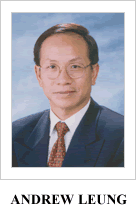By Andrew K.P. Leung (International and Independent China Strategist. Chairman and CEO, Andrew Leung International Consultants and Investments Limited)
 I can’t resist a little riposte to Bret Stephens’ Op-ed of 29 March 2021 in the New York Times. Military, trade, technology, sanctions and other “weapons” have become an ineffective two-edged sword incurring collateral damage without producing meaningful results. Seemingly clutching at straws, Stephens suggests a three-pronged approach.
I can’t resist a little riposte to Bret Stephens’ Op-ed of 29 March 2021 in the New York Times. Military, trade, technology, sanctions and other “weapons” have become an ineffective two-edged sword incurring collateral damage without producing meaningful results. Seemingly clutching at straws, Stephens suggests a three-pronged approach.
First, America should re-enter the Transpacific Partnership (TPP) trade deal capitalizing on Members’ aversion to China’s rising nationalism. The irony is that these same Members have recently forged the Regional Comprehensive Economic Partnership (RCEP) , the world’s largest trading bloc with China as its central hub. At the same time, President Xi has expressed a willingness to join the higher-standard Comprehensive and Progressive Trans Pacific Partnership (CPTPP). So much for capitalizing on Members’ aversion to Chinese nationalism.
Second, Stephens thinks that President Xi’s “personality cult authoritarianism” would ferment internal discord leading to eventual disintegration of the Chinese Communist Party (CCP). Stephens perhaps may not have had the benefit of the July 2020 Harvard Kennedy School Ash Center report Understanding CCP Resilience . For many decades, China under the CCP’s watch has improved people’s lives and aspirations beyond recognition. So for a long time, the CCP has been retaining the top rank amongst governments most supported by its people, multiple levels above a politically-fractured United States.
Third, Stephens flags up China’s perceived “spiritual and religious repression”, which “suppresses moral conscience”, citing the Falun Gong, Islam, Tibetan Buddhism and independent Christian churches.
This ignores the reality that China has three times more mosques per Islamic citizen with 20 times more mosques overall than the United States. The Uighur language remains one of the four ethnic group languages printed on every Renminbi (RMB) bank note. With help from the CCP, the Uighur music and dance have been listed by UNESCO as World Intangible Cultural Heritage. Tibetan and other forms of Buddhism are widely practiced in China. Tibetan heritage is highly treasured in the world-famous Potala Palace in Lhasa.
As for Christians, The Economist estimates that protestants now number 38 million. Various controls are placed upon certain “underground” Catholic churches. However, recognized Catholic churches are popular among many Chinese people. As a Catholic, I attended mass in one of them during a visit to Mainland China. The Falun Gong, however, is a separate category. Owing to its “subversive” connections, it has long been banned in China.
In any case, religion, like other activities in China, is not totally free. But demonizing China for “spiritual and religious suppression” seems an over-exaggeration.
Author: Andrew K.P. Leung (International and Independent China Strategist. Chairman and CEO, Andrew Leung International Consultants and Investments Limited)
(The views expressed in this article belong only to the author and do not necessarily reflect the views of World Geostrategic Insights).







